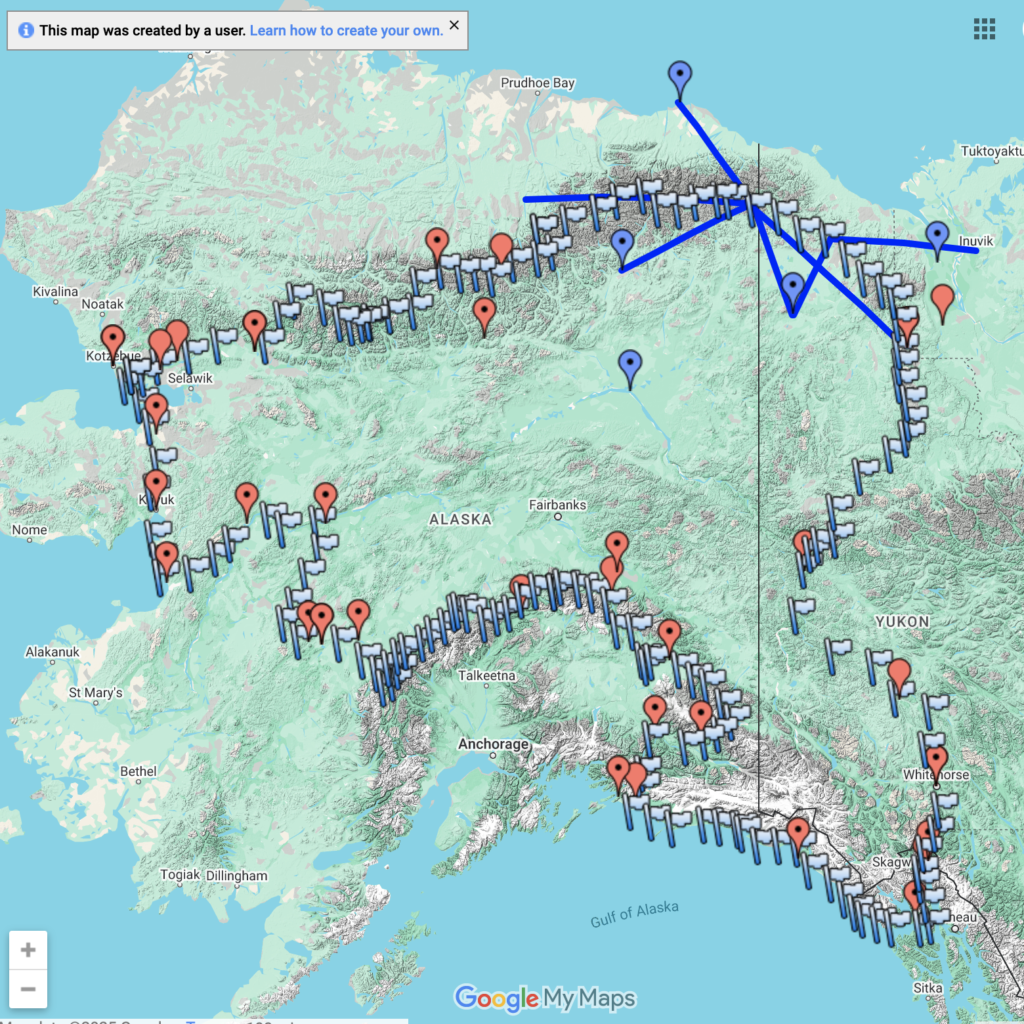How to Avoid Crowds in the Outdoors in Washington and Beyond
- Adam Jones
- 16 min. read
Table of Contents
Are the Outdoors Actually Crowded?
If you’ve recreated outside for any amount of time, you’re well aware that trying to avoid crowds in the outdoors is an often an ever-present problem.
I’m fortunate to live in Washington, a state that’s special for many reasons. But perhaps its greatest treasure is its proximity to some of the best natural beauty and outdoor recreation the U.S. has to offer.
The sheer variety of outdoor adventures available in Washington—within just a few hours’ drive from Seattle—would take multiple lifetimes to fully explore.
Yet, despite the state’s abundance of public lands, trails, climbing locations, and backpacking routes, outdoor enthusiasts here too often find themselves competing for parking spots and trail space with hundreds of other weekend warriors.

Having previously lived in Moab, Utah—the adventure capital of the U.S., nestled between Arches and Canyonlands, I quickly realized I had two choices: learn how to escape the crowds or accept that my outdoor photos would always feature strangers taking awkward selfies in the background (iykyk).
Thanks to this experience, I’m proud to say that:
Most of the time, no matter where I venture outdoors, I rarely encounter others.
In fact, I often see more wildlife than humans.
I never fight for parking spots, and some of my best experiences in the most stunning places on Earth are enjoyed in blissful solitude.
If that sounds like the kind of outdoor experience you’re craving, keep reading. I’ve outlined a unique framework with several unique tips and tricks to help anyone achieve these transformative results.
But first, it’s essential to understand a foundational guiding question:
What are you doing differently than everyone else?
If you visit a national park… on a Saturday… in July… when it’s 80º and sunny… and go for an easy hike… on the most popular trail… and arrive at noon…
Well…
You get what’s coming to you!
Too often, people complain about how crowded the trails and outdoors are–that they can’t avoid crowds in the outdoors–but that’s simply not true. Right now—and even on the busiest days of the year—most trails, mountain peaks, and alpine lakes in Washington and beyond are completely empty.
If you were a bird soaring above all the natural landscapes in the United States, you would struggle to spot a single human, let alone dense crowds of them. And that’s because we have an enormous amount of public land in this country. But the issue is that the few well-known, easily accessible spots which everyone gravitates toward are always packed, skewing people’s perception of how crowded the outdoors really are.
Yet over the years, as a professional adventure guide and passionate outdoor enthusiast, the outdoors have only gotten less crowded for me. Why? Because I keep asking myself that one question:
What are you doing differently than everyone else?
If you’re not willing to be different from the crowd, you’ll keep getting crowded results.
And sure… crowds aren’t the end of the world. Seeing Mt. Rainier is still seeing Mt. Rainier.
But you’re here for a reason—because you know that visiting an incredible landscape surrounded by dozens of strangers is one thing, but having that same place all to yourself? That’s the difference between a great day and one of the best days of your life!
So if you’re ready to embrace a new approach and avoid crowds in the outdoors, the tips below (especially the last one) will help you unlock a life full of adventure and unearth the true outdoors—the wild places I love and often have entirely to myself.
In 2023, Mount Rainier National Park had over 2.5 million visitors—that’s more than 200,000 people per month! On average, in a single month Mt. Rainier receives more visitors than Gates of the Arctic National Park does in 20 years!
Proven Tips to Avoid Crowds in the Outdoors and Beyond
To make these tips action-oriented, I’ve organized them into categories and created a helpful acronym to guide you as you navigate crowded outdoor spaces:
Just remember to “TAP” to avoid the crowds.
Simply TAP (Timing, Access, and Popularity) into these strategies to find the solitude you’re seeking.
We’ll start with the basics and gradually progress to more advanced tactics, saving the best for last.
Now, let’s dive in!
And as you read, keep this in mind…
These tips aren’t just for outdoor recreation.
They’re just as useful for travel, finding restaurants, determining things to in a city, etc.
So don’t limit these tips just to the outdoors. Challenge yourself to think about and apply them to any situation where you often find yourself surrounded by crowds.
Timing: Go When Others Won’t to Avoid the Outdoor Crowds
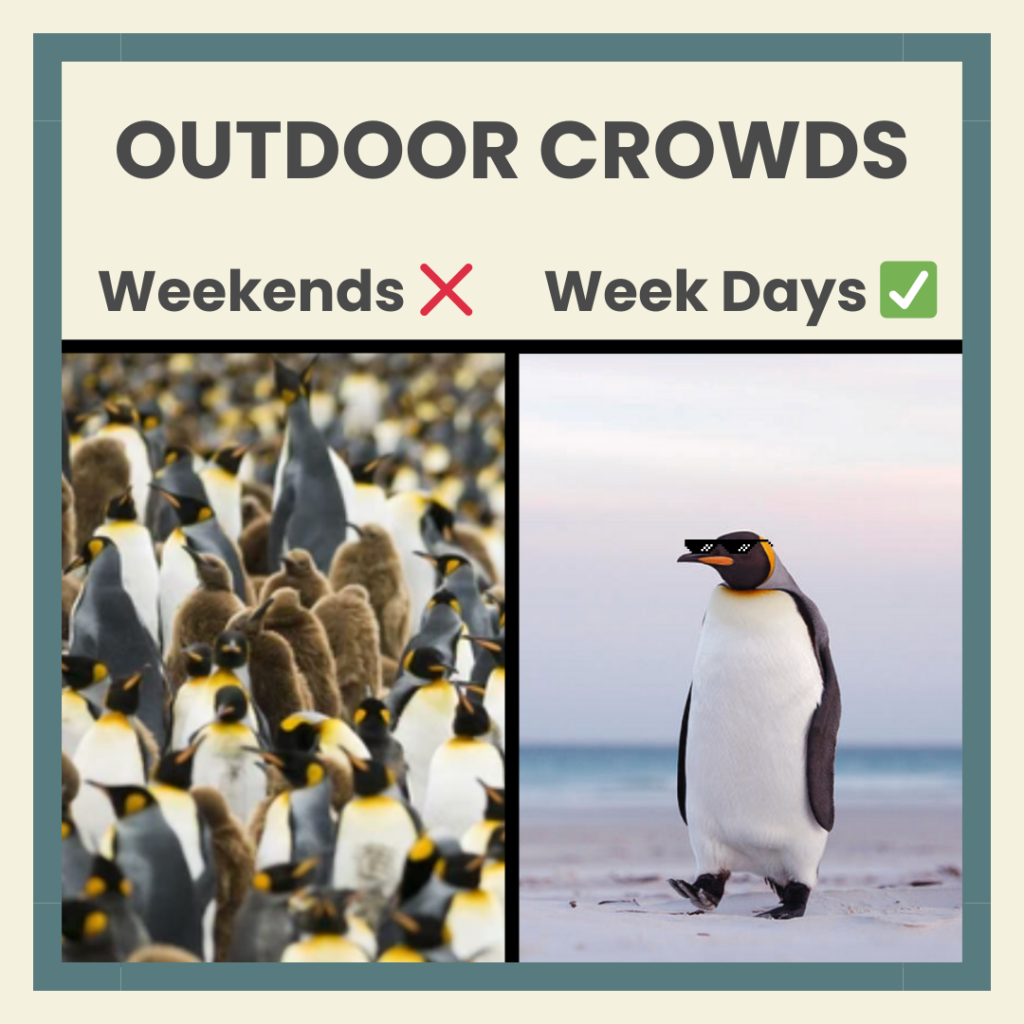
Off-Days: Go on Week Days, Not Weekends
Snow Lake is one of the most popular trails in Washington.
I’ve hiked it twice:
Once on a Saturday with hundreds of others, and once on a Tuesday with maybe a dozen strangers throughout the entire day.
Did you catch the key word in that sentence?
Tuesday.
One of the oldest (and most underused) tricks for avoiding crowds—whether in outdoor recreation, travel, or beyond—is simply to avoid weekends.
I’ve even worked with people in the outdoor industry who refuse to recreate on Fridays, Saturdays, or Sundays for this reason alone.
To really drive this point home: earlier this year, we ran an Alpine Lake Paddle Day Tour on a Saturday in mid-July–one of the best weather periods of the year. Now while we were in packrafts and had the alpine lake entirely to ourselves (more on that later), there were easily 300 visitors that came to the lake that day. Yet, just two days later, on a Monday—with the same perfect weather—we ran another tour and saw maybe six people the entire day.
And once again, the only difference:
It was a Monday instead of a Saturday.
This may be one of the oldest tricks in the book, but it’s a classic for a reason: it works.
By recreating, traveling, or exploring traditionally crowded places on off-days—or even during the “off-season”—you can often cut the crowds in half and, in some cases, by as much as 90%.
Don’t believe me?
If you’re in Seattle, try this experiment: compare a sunny, midday visit to Golden Gardens on a Saturday versus the same for a Thursday.
The difference is undeniable.
Pro tip: Tuesdays and Wednesdays are statistically the least crowded days for outdoor activities and tourism.
Now of course, I understand this tactic may not be realistic for everyone with a traditional 9-to-5 to avoid crowds in the outdoors. But hear me out: you don’t need to burn all your PTO.
Maybe for your most-anticipated adventures of the year—like summiting Mt. Rainier, scrambling Three Fingers, or hiking a section of the PCT—you take off just one Tuesday and Wednesday in August?
This simple adjustment can literally turn a great outdoor experience into one of the best days of your life.
Plus, with today’s challenges like wildfires, heat waves, and poor air quality, betting it all on a random weekend in July for your big event is risky. So why not increase your odds of success by going on an impromptu, mid-week trip instead?
To me, it’s a no-brainer.
Imagine this: by using just five (5) PTO days—one per week in August—you and your friends could take every Tuesday off during the best weather month of the year. That means experiencing the Enchantments, Olympics, North Cascades, and Mt. Rainier, during their prime, with half (or even a quarter) of the usual crowds.
And if full days off aren’t possible, consider this: in summer, the sun rises at 5 a.m. and sets at 10 p.m. By taking just a half day off midweek, you could leave at noon, enjoy a 10-hour adventure (2-hour drive, 6-hour outing, and 2-hour drive back), and still avoid the weekend crowds, all in time to even go to bed at a reasonable hour.
It’s simple math!
Sure, it’s committing, but sooooo worth it! And, once again:
If you’re not willing to be different from the crowd, you’ll keep getting crowded results.
But I know many of you came to this article looking for more than just this tip, so let’s move on to the next one…
Action Items in Summary
- Go during the “off-season”
- Plan your PTO for midweek summer adventures
- Take a half-day, midweek to enjoy an extended, isolated outdoor adventure
Off-Hours: Start Early to Avoid Crowds in the Outdoors
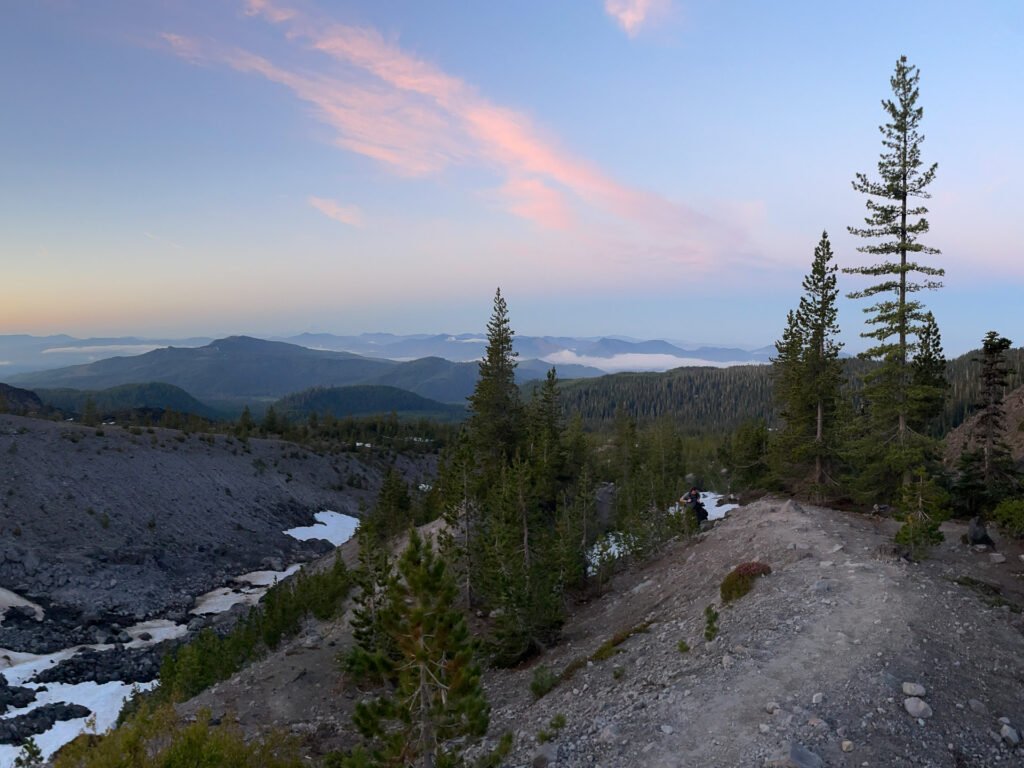
You’d be amazed at how much of a difference arriving at the trailhead just 30 minutes before the regular crowd shuffles in changes your outdoor experience.
Most people in Washington typically hit the trail between 7-9 a.m., depending on how close the trailhead is to the city. But in the Pacific Northwest, the sun rises between 5-7 a.m. from spring to fall.
When I visit popular hiking spots, I always aim to arrive 30 minutes before sunrise.
This not only makes me one of the first people there, but also allows me to experience the best time on the trail. The wildlife, soft lighting, and cooler temperatures during the first two hours after sunrise are unparalleled.
Now, I get it—waking up this early isn’t everyone’s cup of tea to avoid crowds in the outdoors. And if that’s you, just two reminders:
If you’re not willing to be different from the crowd, you’ll keep getting crowded results.
- Don’t worry—there are plenty more tips coming your way!
But starting early doesn’t just apply to trailheads; it can also mean kicking off your trip earlier.
Take weekend backpacking trips, for example.
Most people in Seattle head out Saturday morning for a two-day outdoor adventure, but you’d be blown away by how much solitude you’d gain by starting on Friday instead. Even leaving work at noon on Friday to get a head start can make all the difference to avoid crowds in the outdoors.
Sure, you might see all the people on your way back, but heading out early gives you the rare chance to feel like you’re at the front of the rollercoaster—first in line to enjoy the trail.
And remember: the first person on the trail always has it entirely to themselves, no matter how busy the day.
Action Items in Summary
- Get in the habit of arriving at popular trailheads 30 minutes before sunrise
- Start any weekend trips earlier, ideally as early as you can on Fridays
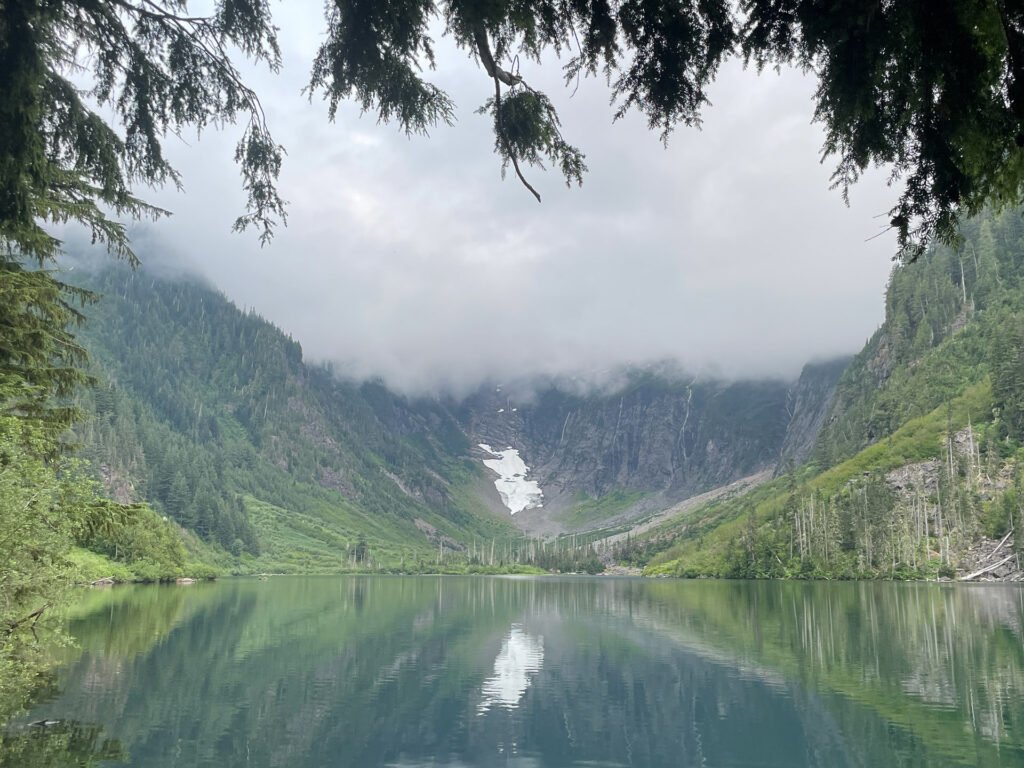
I always say, “If you want to have the outdoors all to yourself, go in the rain.”
For starters on this topic, if you live in Washington, it never really rains. It just sprinkles. And when you’re on the trail under 200-foot canopies of Western Hemlocks and Douglas Fir trees, you often barely even feel the rain.
But the good news is, even if you do, using some key money-savings tricks, for around $300 or less you can get a solid rain-proof setup.
Just by getting three pieces of gear: a waterproof rain jacket, waterproof rain pants, and waterproof boots, you can experience the true bliss that is hiking in any downpour, yet staying perfectly dry.
For those who’ve never experienced this, it‘s truly nothing short of magic, and completely changes your perspective on favorable and unfavorable hiking conditions. You feel like you have a superpower, now able to simply repel any unwanted elements of nature (rain, wind, sleet, snow, etc.), all while avoiding the crowds of the outdoors!
That said, I’ll be the first to admit: great weather can completely transform a trip.
Hurricane Ridge on an overcast day versus a sunny one can mean the difference between another gray day in the Washington and one of the most unforgettable views of your life.
But let’s not forget—certain weather conditions can spark unique adventures and create outdoor views you’d never see otherwise. For example, many of my favorite packrafting experiences have occurred in what most would consider “bad” weather (see picture below).

The bottom line? Weather makes a huge difference in crowd levels.
Most people are fair-weather outdoor enthusiasts. Even a slight chance of rain in the forecast can deter at least 50% of would-be hikers.
So when the weather looks unfavorable, flip the mental script, view that red light as a green one, and embrace the adventure!
Over time, you’ll get used to these conditions—and even appreciate them. Plus, once those sunny days come back around, then they will feel all the more magical!
Action Items in Summary
- Invest in quality, waterproof rain gear for adventuring in adverse weather
- Build the habit of recreating in “poor” weather conditions
Alright, that wraps up the T in TAP:
- Timing
- Go when others won’t
- Off-Hours
- Off-Days
- Off-Weather
- Go when others won’t
Now, let’s move on to A: Access.

Over the past 50 years, annual recreation visits to our national parks have more than doubled, rising from 168 million to 331 million.
Access: Go Where Others Can’t to Escape the Crowds
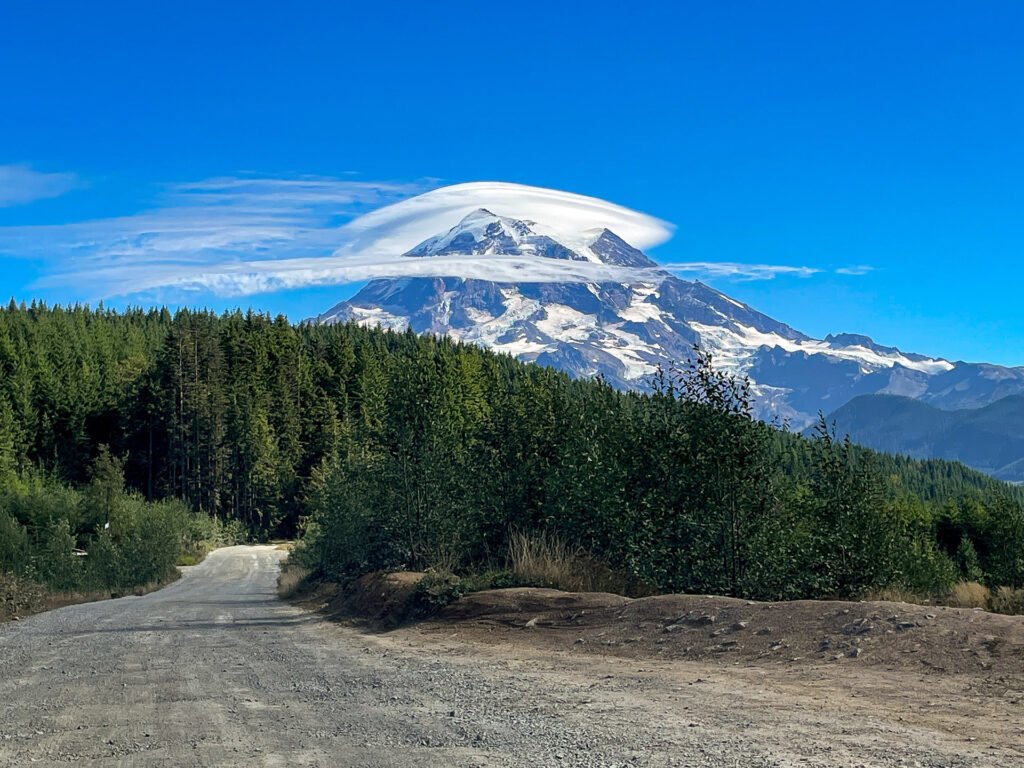
Go "Off-Road," Venture Farther, and Avoid the "Easy" Path
If you’ve made it this far, you’re in for a treat as this is where things really start to make a difference in how to avoid crowds in the outdoors.
Now, going back to the central premise, the next question that I like to ask myself is:
“Of all the people playing outside today, what percentage are able or willing to go where I’m going?”
One of my favorite Saturday drives is heading east on the Mountain Loop Highway.
The journey starts about an hour outside Seattle in Granite Falls, on a paved road not far from the major interstate. After about 30 minutes, you pass the trailhead for Lake 22, one of the most trafficked hikes in the state, with over 13,000 AllTrails reviews.
By noon on a perfect summer day, despite parking restrictions, cars line both shoulders of the road outside the parking lot. The vehicles typically stretch for at least a mile in either direction from the trailhead.
Keep in mind, this is a moderate hike, easily accessible, and located just off a paved road. I’d venture to say that 75% of the entire outdoor population could hike this trail.
Now, continue driving another 30 minutes down the road, and you arrive at the trailhead for Gothic Basin. While it’s still just off a paved road, this trail is much more grueling.
By simply upgrading from a “moderate” to a “hard” hike and traveling just 30 minutes further from the city, the number of AllTrails for this hike reviews drops to only 2,300—nearly 6x less than Lake 22!
While maybe only around 25% of the outdoor population could handle this hike, the trailhead still overflows with cars, spilling onto the shoulders of the road.
Finally, leave the paved road behind and drive another hour east from the Gothic Basin trailhead along rough, potholed gravel forest roads. You’re now much further from the city, requiring technical driving or a high-clearance vehicle.
Eventually, you reach the North Fork Sauk Trailhead, the gateway to Glacier Peak or the White Pass Pilot Ridge Loop. At this point, you’ve wiped almost everyone off your trail. These hikes are typically used by the most experienced hikers and backpackers, as they are even more strenuous and often require multiple days off to complete.
With the challenging drive and physical commitment required, you’re now looking at maybe 5% of the entire outdoor population being capable of undertaking these trails.
This is reflected in the numbers:
- Lake 22: Moderate, close to the city, paved road (~13,000 reviews)
- Gothic Basin: Hard, paved road (~2,300 reviews)
- White Pass Pilot Ridge Loop: Far away, very strenuous, unpaved road (~100 reviews)
Now, bringing it all back, these examples highlight the importance of being different to truly escape the crowds by simply venturing off the paved roads and further “off-road” into the backcountry.
Action Items in Summary
- Travel farther from metropolitan areas to further distance yourself from the crowds
- Seek unpaved, dirt roads—ideally 4×4 roads, if your vehicle can handle them
- Take on harder, more strenuous outdoor activities
Aquire Gear to Avoid Crowds in the Outdoors
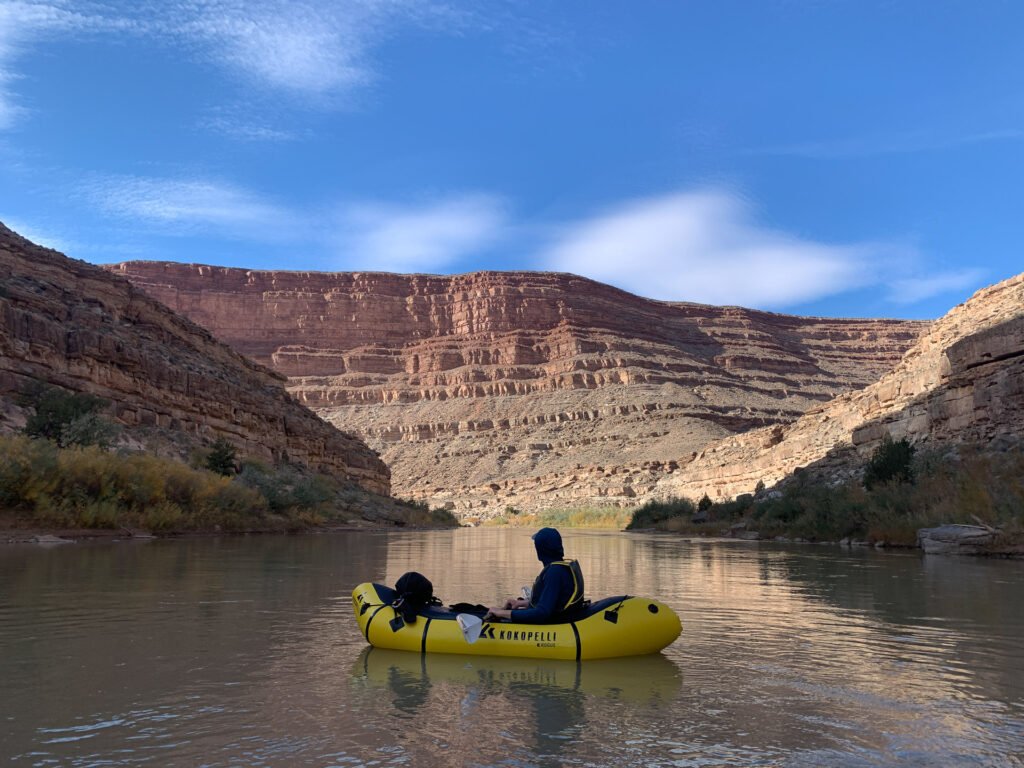
This tip is one of my favorites.
One of the best ways to avoid crowds in the outdoors in Washington and beyond is simple.
Acquire gear.
About 95% of outdoor enthusiasts can go hiking—all you need are shoes, a pack, and a water bottle. This accessibility is why hiking trails are often crowded.
But what happens when you add gear to the equation? Say climbing, for example…
Many people can easily rent climbing shoes and a chalk bag to boulder inside at a climbing gym. This is one of the reasons that Seattle’s climbing gyms are so crowded. But climbing outdoors is a different story.
Now, you need at least a rope, harness, helmet, and additional equipment like quickdraws and carabiners.
All of a sudden, you’ve narrowed the field to a much smaller group—let’s say around 10% of outdoor enthusiasts who possess all this gear.
The same goes for paddling in Washington.
If you want to paddle on Lake Union in August, an inflatable paddleboard and a PFD might be all you need.
But if you want to experience the unparalleled whitewater of Washington, like the Boulder Drop section of the Skykomish River, it’s a different story.
Now you need a whitewater packraft, kayak, or raft; along with a paddle, whitewater PFD, drysuit, water shoes, et al.
Investing in gear not only unlocks new outdoor opportunities but it also significantly reduces the crowds, giving you a more isolated and rewarding experience.
Thousands hike to the crowded shores of Snow Lake, but only a select adventurers few bring a packraft and have the entire lake to themselves.
And there’s a common misconception that gear and thus outdoor recreation is only for the affluent. This is simply not true.
When I lived in Moab, I was surrounded by some of the most outdoor-oriented people I’ve ever met—people who recreated for hours each day, often across multiple disciplines.
The kicker?
Almost all of them earned less than $40K a year.
Sure, if you play by the rules of convenience and purchase, top-rated, excessive, brand-new gear, then outdoor recreation can be expensive.
But if you know where and how to look for affordable gear, recreating in the outdoors can also be incredibly affordable.
And you don’t always have to purchase gear… renting is also an option.
The next time you want to avoid the crowds in the outdoors, you don’t have to break the bank investing in a brand new set up. Instead consider the plethora of amazing options in the Seattle area for renting gear for a fraction of the price, with the same–if not better–results.
I will soon be publishing another in-depth guide on how to recreate in the outdoors for cheap, where I share tips on buying used gear, finding sales, renting, and other tricks to get outside without breaking the bank.
Action Items in Summary
- Invest in gear to gain access to less crowded outdoor experiences
- Consider renting gear for your upcoming adventures
Aquire Skills to Avoid Crowds in the Outdoors

Unfortunately, there’s often a barrier to gear—you need to know how to use it.
That’s not always the case, though.
That’s the beauty of sports like alpine lake packrafting. Tighten your PFD, inflate your packraft, and boom! You’re good to go. No steep learning curve or major barrier to entry—just grab a packraft, and the alpine lakes are yours to explore!
On the other hand, gear alone isn’t enough for some activities. You can own all the climbing gear in the world, but if you don’t have the skills or knowledge to climb, it’s useless.
A great rule for life—and especially for the outdoors—is to acquire skills.
Not everyone can rock climb, even fewer can lead climb, and much fewer can trad climb. The number who can who tackle ice and mixed climbing routes in Washington is even smaller!
The more specialized your skills, the fewer amount of people in the outdoors you’ll find doing it.
There’s a reason Jimmy Chin, Conrad Anker, and Renan Ozturk were the only ones to summit the Shark’s Fin on Meru—they were the only ones with the skills (and courage) to take on the challenge!
And remember, you can always push further.
You can progress your skills or combine them with others to open up even more opportunities for solitude.
First you’re paddling Lake Union, then you’re paddling the whitewater of the Snoqualmie River, and before you know it, you’re combining mountaineering and packrafting: summiting Mt. Olympus and paddling out the Hoh River to Pacific Ocean!
And with each progression, the fewer people you’ll see along the way!
Action Items in Summary
- Acquire outdoor skills to separate yourself from the crowd
- Continue advancing your skills (e.g. lead climbing, then trad climbing, then ice climbing)
- Look to combine your skills to unlock greater solitude (e.g. multi-sport adventures like bikerafting)
Alright, now we’ve got the A in TAP checked off too, here’s a quick refresher:
- Access
- Go where others can’t
- “Off-Road”
- Far Away
- Not Easy
- With Gear
- With Skills
- Go where others can’t
Alright, let’s wrap things up with P.
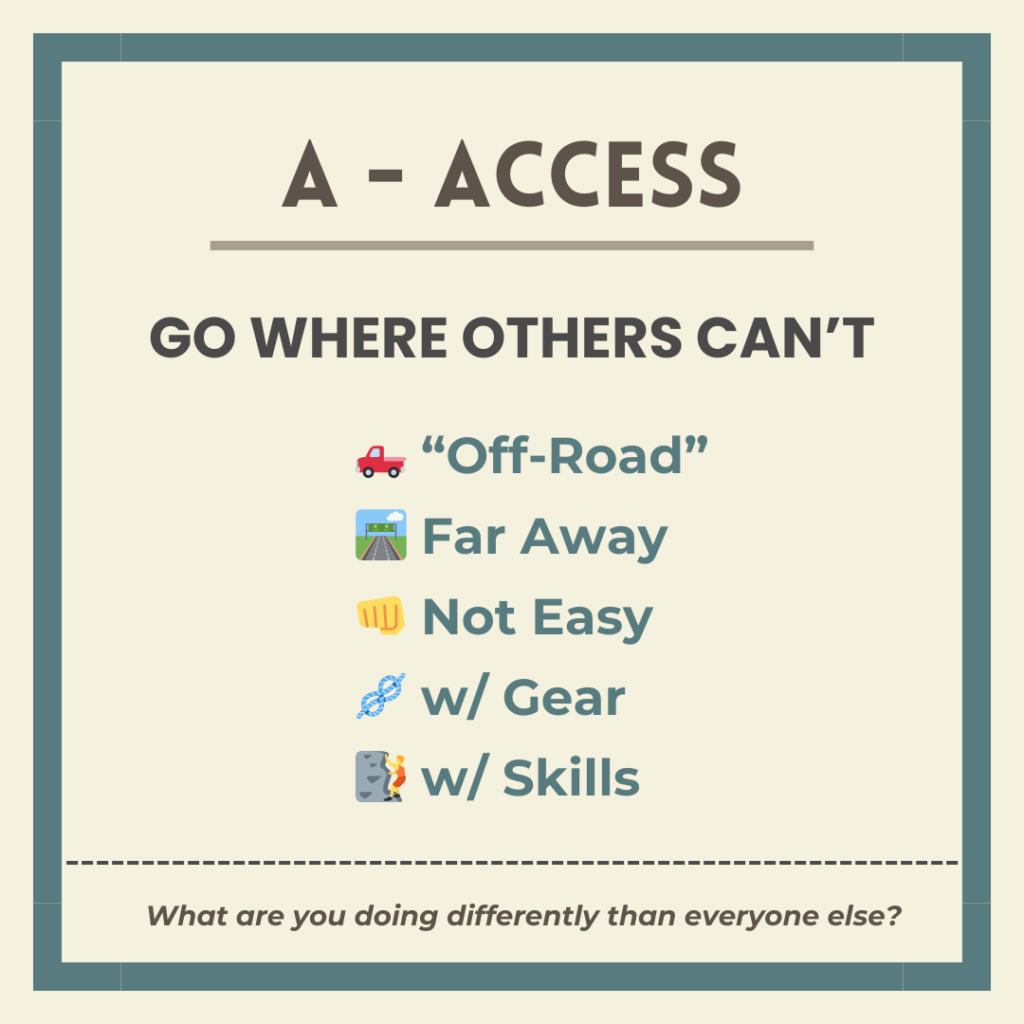
A statistical analysis shows the percentage of climbers who can climb each grade:
5.9: 76% | 5.10: 65% | 5.11: 30% | 5.12: 8% | 5.13: 1% | 5.14: 0.01%
Statistically speaking, 76% of climbers can climb 5.9, yet only 8% can climb 5.12.
Popularity: Go to the Unknown to Avoid the Crowds Outdoor
Venture Beyond the Internet: Go Offline
So far, we’ve covered ways to gradually distance yourself from the crowds outdoors. But now, it’s time to truly level up.
One thing to always keep in mind: most people who recreate in the outdoors (in Washington and beyond) rely on just a few main sources to decide where to go:
- Googling “best [activity] in [location]” (e.g. best hiking in Washington)
- Browsing AllTrails
- Finding geotagged locations via social media
This is exactly why when I visited Glacier National Park for the first time, I used those exact methods—not to figure out where to go, but to determine where not to go.
Once again, if you do what everyone else is doing, why would you expect different results?
Instead, try simply spending more time outdoors. While it might not seem like worthwhile advice, think about it: if you hike every other week in Washington for a year or two, you’ll naturally develop a sense of which areas are crowded and when.
You’ll discover new roads, trailheads, and places others that you and others would’ve never have stumbled upon. You’ll start spotting opportunities for solitude that no app or review site could reveal. Once you take that first step into the unknown, the rest of the path often reveals itself.
Sure, AllTrails and Instagram may point you toward great hikes, but my all-time favorites are rarely listed there. That’s because if you do find an idea online, remember: if you’re seeing it, so are countless others.
Use those resources strategically—to gauge where crowds are likely to be—and then plan accordingly to go somewhere else or use the above tactics to make sure it’s a not a zoo when you get there.
And another huge benefit of avoiding online resources is preserving the essence of adventure.
Over-researching eliminates three of the core aspects of adventure: unforeseen events, risk, and flow.
If you’ve already looked up where to go, what to do, and what it looks like, there’s no room for surprises. It’s like reading the plot of a movie before watching it.
Without the uncertainty of the unknown, there’s little chance for excitement, risk, and entering a flow state. Plus, when you’re focused on a set destination, you’re more likely to miss the journey itself.
Being present in the moment is where the magic happens!
Action Items in Summary
- Use online resources to identify where crowds are likely to go
- Spend more time outdoors to unearth hidden gems through first-hand experience
- Avoid over-researching and embrace the spontaneity of adventure!
Use a Map to Avoid the Crowds in the Outdoors
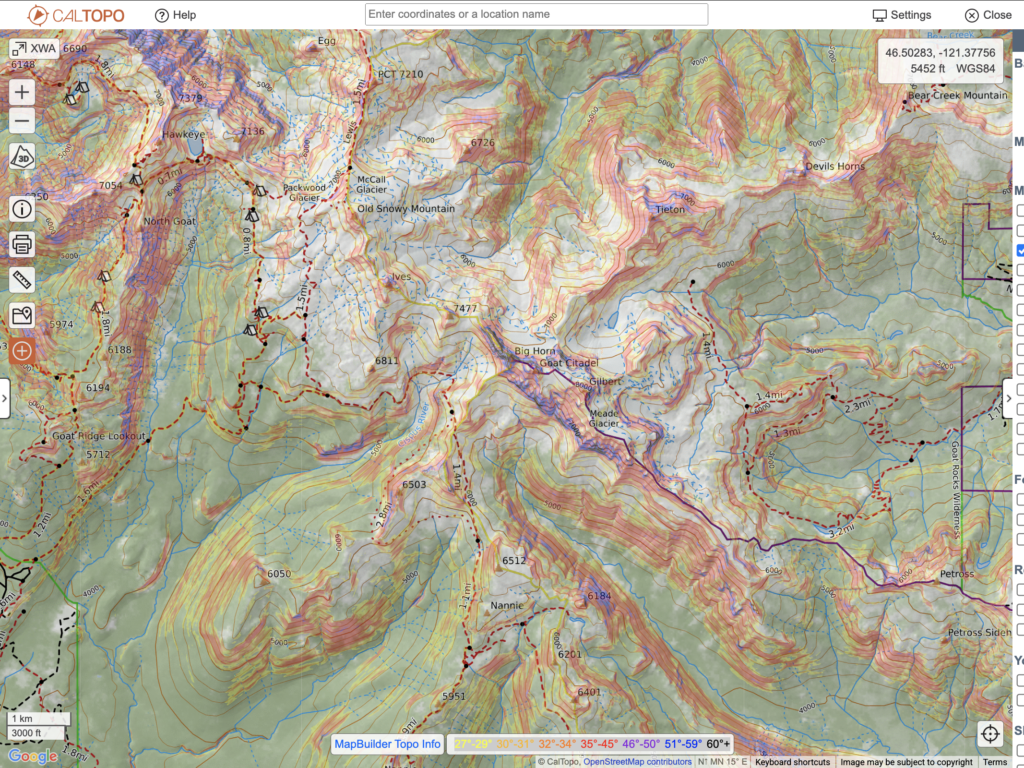
And now for my absolute favorite tip–this, among the rest, offers the grandest payout of them all!
Many years ago, I became fascinated with topographic maps.
So much so, that I often find myself spending countless hours on CalTopo or Gaia GPS, poring over the amazing terrain of Washington in search of my next adventure.
I’ll scan for rivers, trails, roads, mountains, lakes, and scrambles—letting the contours of the land spark my imagination.
I’ve discovered alpine lakes I never would have found otherwise and dreamed up multi-sport adventure routes that have led to nothing short of pure ecstasy.
Many of my absolute favorite adventures and most memorable moments in the mountains have come from this age-old practice of studying a map and then exploring my curiosity into the unknown.
One of the things I love most about this approach is the lack of expectations.
Often times, before I arrive at the trailhead, I haven’t seen any photos or read any ratings of the experience, so there’s no expectation to hold it to. Of course I prepare appropriately, but every outing is thus still full of surprises—an essential element of adventure.
I also love this method because it’s entirely unique.
While 85% of people might use AllTrails to find their next hike, I’m likely the only one plotting an alternate route to summit Camp Robber Peak using a packraft. This originality means I rarely encounter others on my outings in Washington, making the experience all the more rewarding.
And it never gets old—in fact, it only gets more exciting!
It creates a self-sustaining cycle: I study a map, I explore the new area, I experience hidden landscapes, I gain new skills, I acquire more gear, and then I study the map again, now with more even options than before!
With this approach, the possibilities are endless, and life truly feels limitless! Once you embrace this level of exploration, there’s no going back.
Fair warning, though—you might soon find yourself completely addicted to the thrill of this adventure!
But if you’re coming seeking the grail–the answer to all your problems of how to avoid crowds in the outdoors–this might just be all you need!
Action Items in Summary
- Dive into maps to discover unique adventures
- Explore the outdoors without expectations and embrace the unknown
- Get into the cycle of endless adventure: peruse maps, obtain gear, enhance your skills, adventure – rinse and repeat!
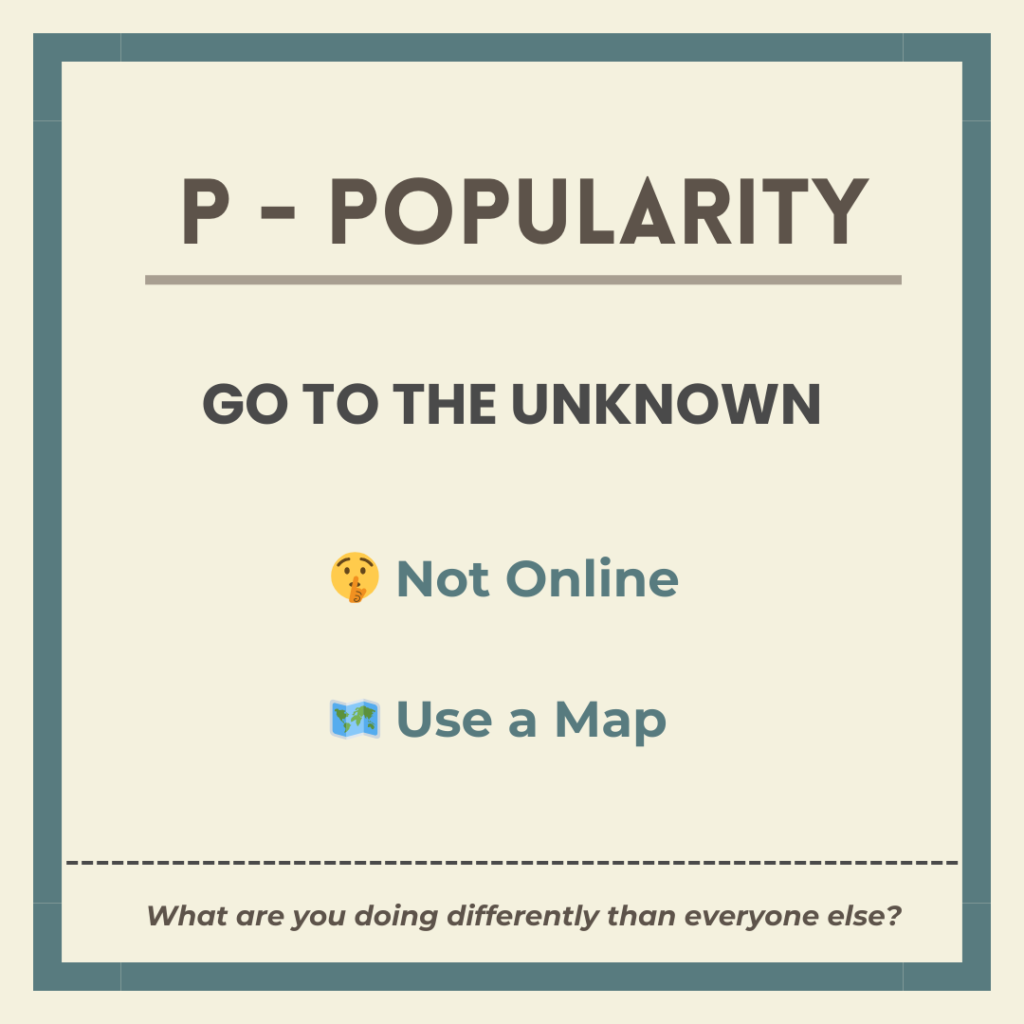
AllTrails went from launching its app in 2011 to having over 65 million users by 2024.
In Conclusion: How to Avoid Crowds in the Outdoors
That’s it—now you have the tools to “TAP” your way to a crowd-free outdoor experience.
Below, you’ll find a handy graphic to save to your phone to reference anytime you’re planning your next crowd-free adventure.

At its core, avoiding crowds in the outdoors comes down to the guiding principle:
- Always ask yourself, “What am I doing differently than everyone else?”
The truth is, the trails are crowded because waking up before sunrise, hiking in the rain, or learning advanced outdoor skills aren’t easy. These things take effort, time, and dedication.
But that’s the beauty of it—because when you go the extra mile, not only will you find solitude in nature, but you’ll also experience the deep satisfaction of having earned it!
So get out there and recreate—not amidst the crowds, but in the wild, serene landscapes and with the abundant wildlife we’re so fortunate to have in this beautiful state of Washington.
And since you’ve made it this far, as a bonus tip, I’ll let you in on a secret…
Of all the ways I avoid crowds in the outdoors, there’s one ultimate hack: using a packraft!
It truly feels like a cheat code.
With a packraft, you don’t have to worry about T-Timing or P-Popularity, because the A-Access is sooooo overpowered!
Packrafting allows you to visit places like the most popular, amazing alpine lakes on this planet, and have the entire place to yourself. That’s exactly what I did when visiting Avalanche Lake in Glacier National Park. Just by bringing my packraft to the crowded lake, I left hundreds of tourists at the shore and paddled out to have the entire lake to myself (see below).
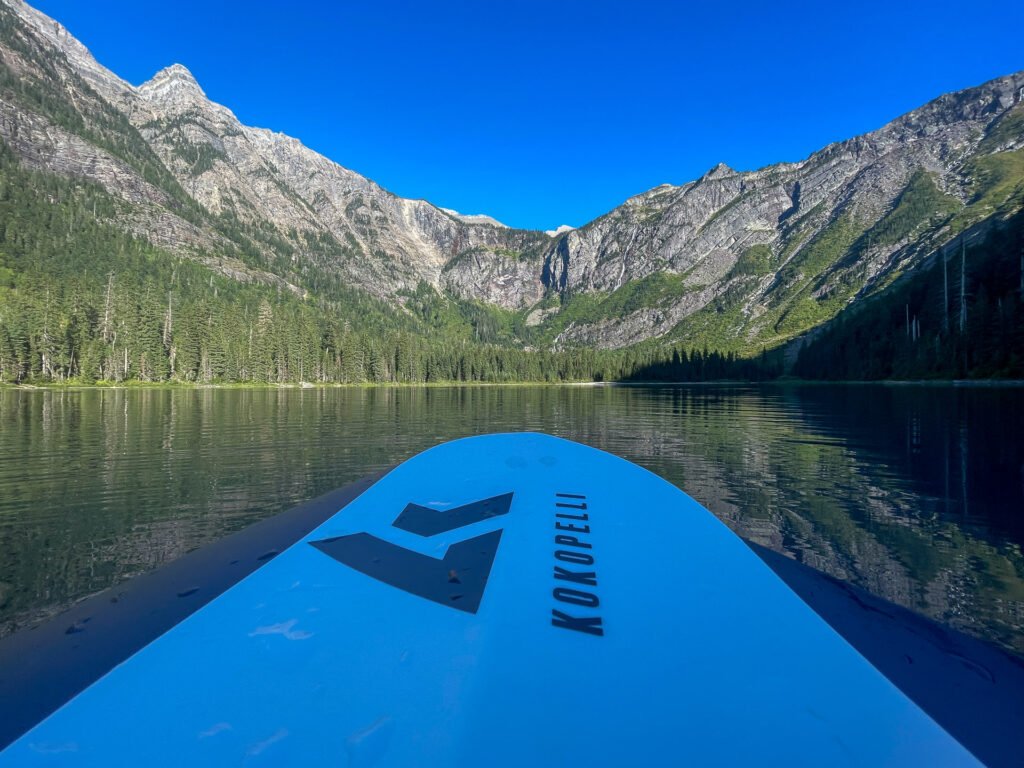
This is exactly why so many Washington adventurers seeking unique, crowd-free outdoor experiences rent our packrafts: to have amazing places like Snow Lake and Colchuck Lake all to themselves.
Don’t believe the hype?
Recently, Miranda Goes Outside (YouTube: 144k | IG: 66k) snagged a packraft to experience one of our amazing alpine lakes in Washington and here’s what she had to say:
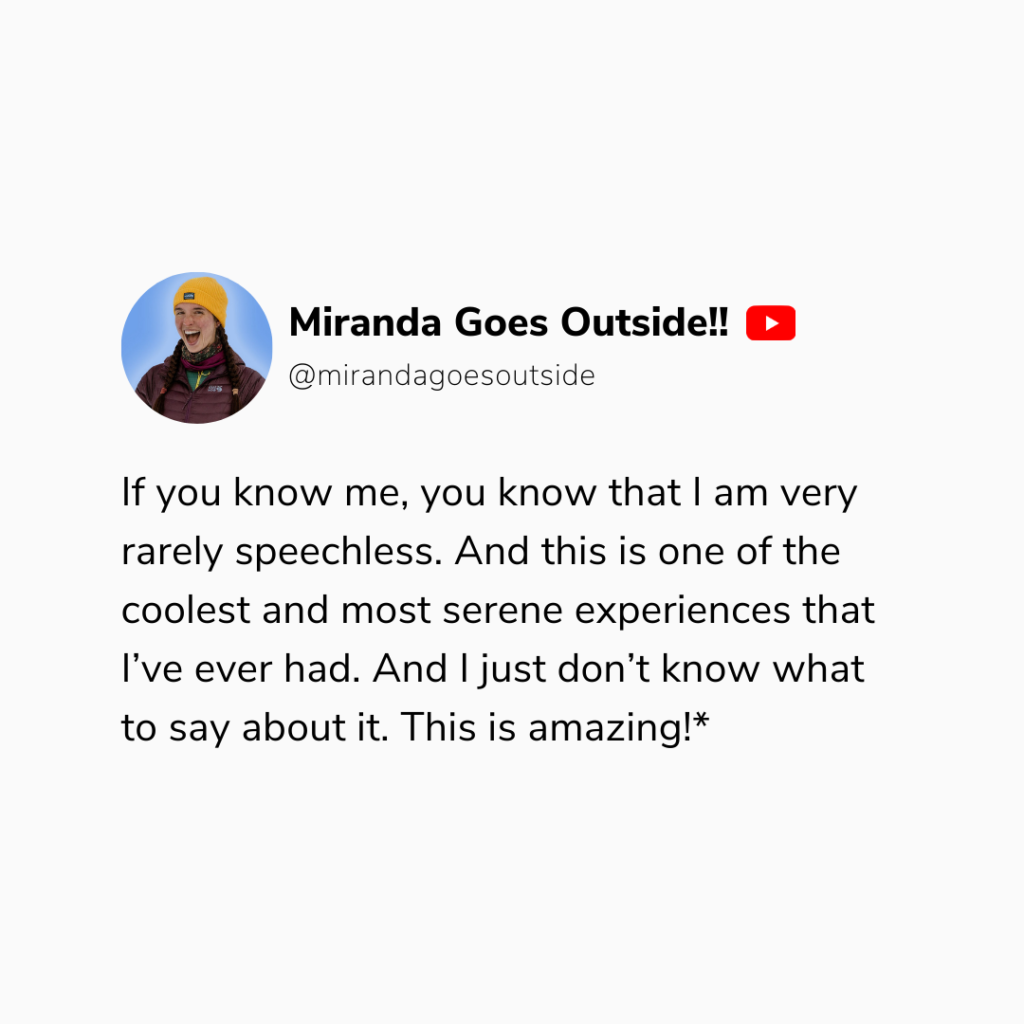
So take these tips and incorporate them into your outdoor adventures—and even your daily life—to embrace a more adventurous way of living.
Then, book your packraft rental today and experience the bliss of paddling through alpine lakes, unlocking the true magic of solitude in the wild!
Looking to Take Next Steps to Avoid the Crowds?
See the below resources to capitalize on any of the above tips to experience your crowd-free adventure!
- Have an alpine lake trip in mind? Rent our packrafts and make your unique adventure a reality! We provide lightweight, packable alpine lake specific packrafts and all the necessary packrafting accessories at an affordable rate to make your one-of-a-kind adventure unforgettable!
- Want to work on acquiring skills in the outdoors to level-up as an adventurer? Sign up for our Intro to Packrafting or Whitewater Packrafting course to expand your skill set on the type of crowd-free adventures you can experience!
About the Author
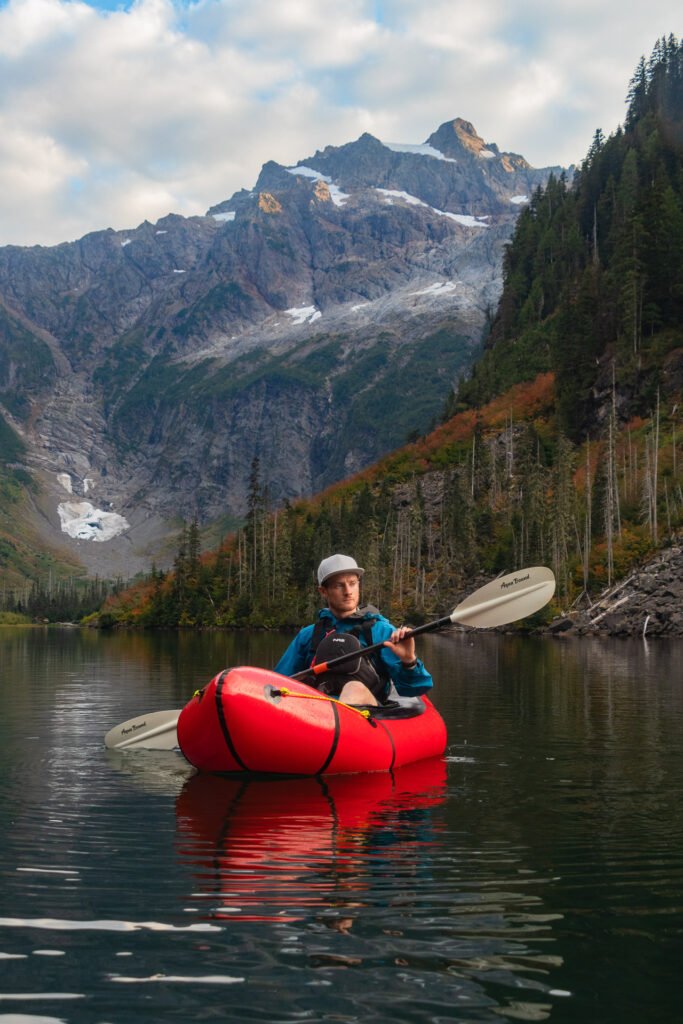
Adam Jones
Based in Seattle, Adam is the Owner and Lead Guide/Instructor at Optimum Adventures. He is one of the few ACA Level 4 Packraft Instructors in the country and holds numerous additional certifications that reflect his commitment to safety and excellence in outdoor recreation. A passionate outdoor enthusiast, he strives to be well-rounded in his pursuits, with packrafting, backpacking, and adventure travel at the forefront. Driven by an incessant desire for self-improvement, he aims to share his love for adventure with others.
Certifications: ACA Level 4 Packraft Instructor, ACA Swiftwater Rescue, Wilderness First Responder, CPR, Leave No Trace Trainer, PADI Freediver
Share this article to build better partners in the outdoors!
This post may contain affiliate links. If you make a purchase through these links, we may earn a commission at no extra cost to you.
Enjoyed the article? Stay updated with our latest posts — subscribe to our newsletter below!


